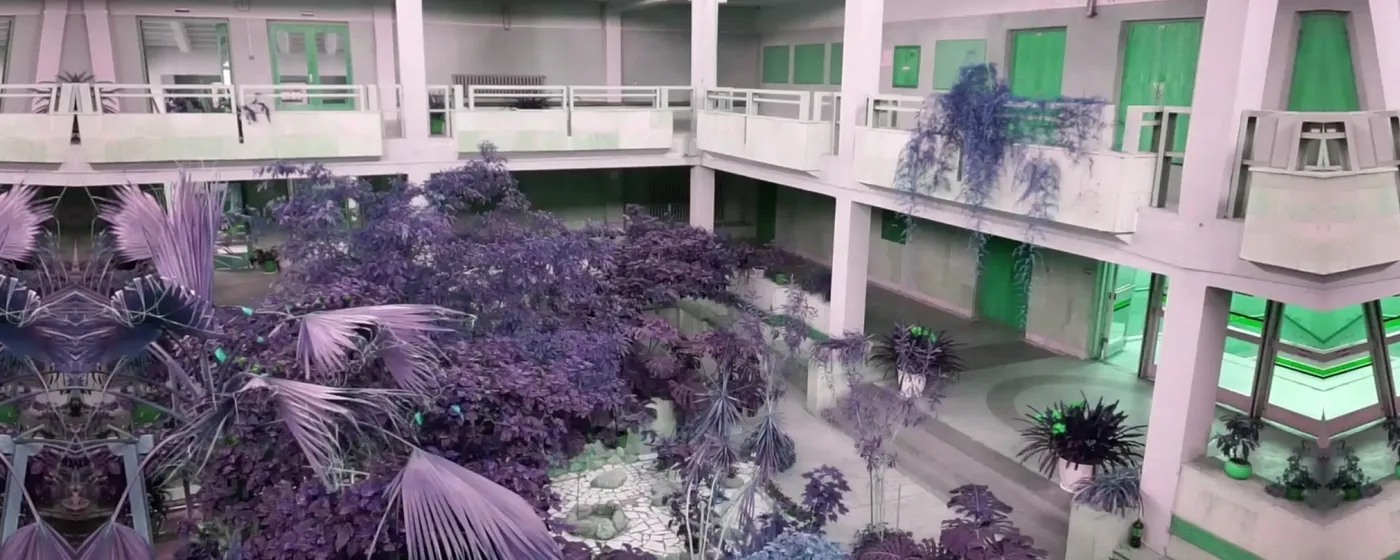
Deconstruction of Myths #1. Exploring New Worlds
From CIFRA: In Olga Shishko’s selections, dedicated to myths, artists show that myth isn't just made up; it’s a reflection of reality. Familiar places take on new shapes and sounds. The ocean floor becomes a spot that you can actually sweep clean, while an ancient cave feels like a home you never want to leave. From Olga Shishko: According to one of the most intriguing researchers of myths, Alexey Losev, “a myth always and inevitably represents reality... it isn’t a mere fabrication.” There’s nothing fantastical about a myth. Instead, it clings to “reality,” permeating all aspects of human life. The myth influences human sensibilities, thoughts, and behaviors. However, the nature of myth is dialectical, so we can’t label it total. Myth-making isn’t just a tool to tie together life’s phenomena but also liberates human imagination. Cracks and gaps are uncovered within myths, leaving space for artists’ interpretations. Contemporary society is grappling with a crisis in comprehending the world and establishing connections with the environment. In the Anthropocene era, the lines between humans and the natural world are becoming less defined. In this scenario, new ways of engaging with the world are required, and artistic imagination offers these possibilities. Media artists, acting as “mediums,” reinterpret humanity within ecological, social, and technological challenges. They highlight the role of myths in our perception of the world, a role that we likely underestimate. Thus, the artists showcased in this playlist harness the power of myths to weave together phenomena in defiance of the very myths themselves. Phenomena are linked in ways distinct from the conventional, resulting in the creation of new realms. Shi Zheng, in the work “Melting in Time,” uses computer generation technology to showcase the destruction of a massive iceberg in the Greenlandic fjord. The collapse of the ice shelf ceases to be solely a natural event. It’s a confrontation of human, geological, and technological time against catastrophic climate change. Artist Giuliana Cunéaz also uses computer generation technology to create an artificial environment. Her work “Zone Fuori Controllo” is an imagined iceberg destruction whose nature remains unclear — is that an ice block or a technogenic sculpture? Sara Tirelli blurs the boundary between the fantastical and the real, connecting the science James Ballard’s fiction novel “The Drowned World” with scenes of sinking Venice in the work. The fiction overflows its banks and this demands new value systems and ways of life. In the work “Zone Yonaguni,” Angelika Markul drops into a sunken world, where she explores the submerged monument of Yonaguni. What force constructed it? Was it created by a lost civilization or natural forces? An excerpt from artist Alexandra Dementieva’s performance “Twin Depths” underscores the futility of attempting to connect with nature through naive means. Dementieva delves into the environment from which humanity originated: the world ocean. She endeavors to lead a conventional life in this realm—arranging a rendezvous, enjoying music, sweeping the seabed, and even trying to sit on a chair. Yet, her endeavors are met with failure. Shahar Marcus (The Orchard), known for his artistic irony, drifts within a “fruitful” pool. This captivating display, resembling a ritual, only further accentuates the anachronism deeply embedded in the capitalist culture of excess, which has lost its viability. Tanya Akhmetgalieva’s “Fragile Island” video installation encapsulates a tender reminiscence of childhood—imbued with utopian ideals and a sense of solitude. The artist describes her work in the following manner: “When I was still a child, I imagined an island as a small piece of land, akin to a bump, surrounded by endless water. It might be absolutely empty, or one or two palm trees might be standing on the island. There was only enough space for one person. I feel as if I am still living on that island to this very day...”. In the film “Blue Hole” by artist and director Chen Zhou, a young girl gets lost in a cave that glows with Klein-Jarman’s melancholic blue. Her only connection to the world is the blue screen of her phone. Her friends wander in the forest, trying to find each other and discussing the loneliness they experience in the virtual world. The blue hole is a gap between the real and virtual worlds, where our loneliness is sharply manifested. Another reality as a different space is an essential theme in media art. Art becomes a portal to alternative realities, and myth-making becomes a technique for discovering these portals. Using new media, technologies, and techniques allows us to tear the fabric of “reality,” which, as we see, is woven from mythic threads.
Countries
IT
Tags
Pieces in playlist








